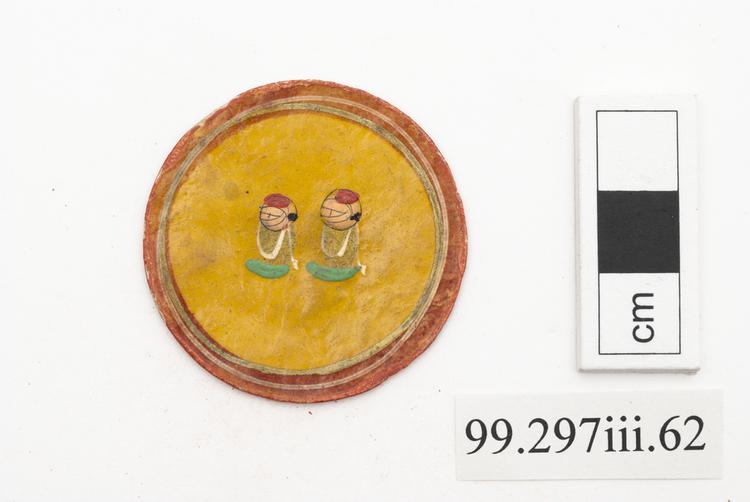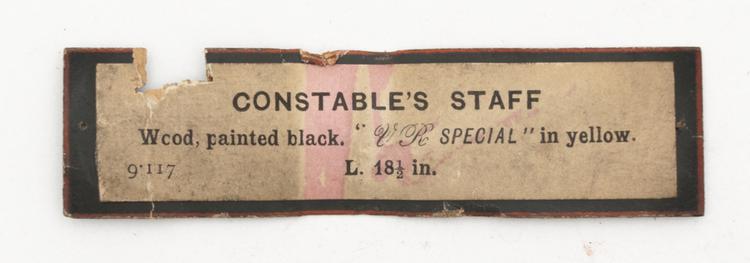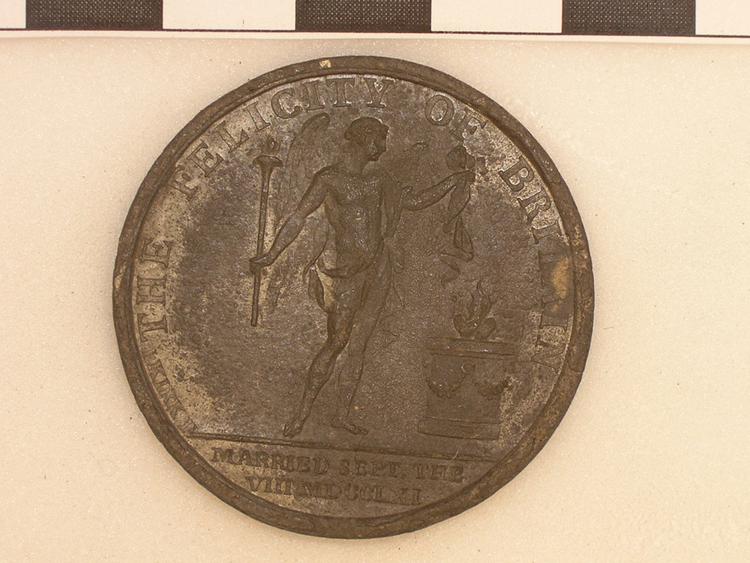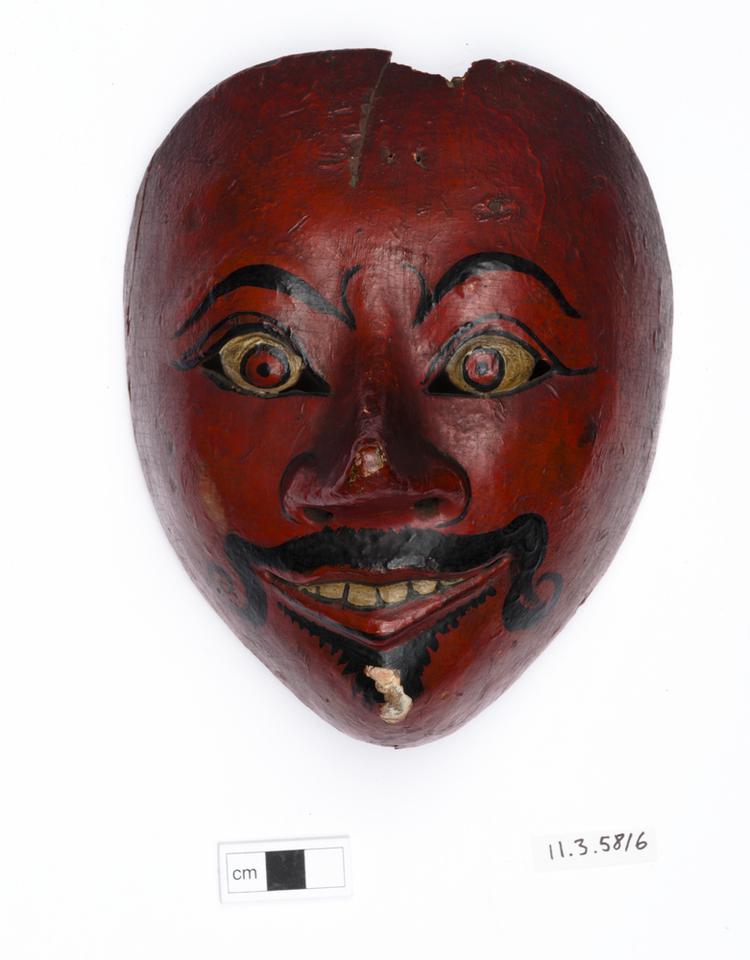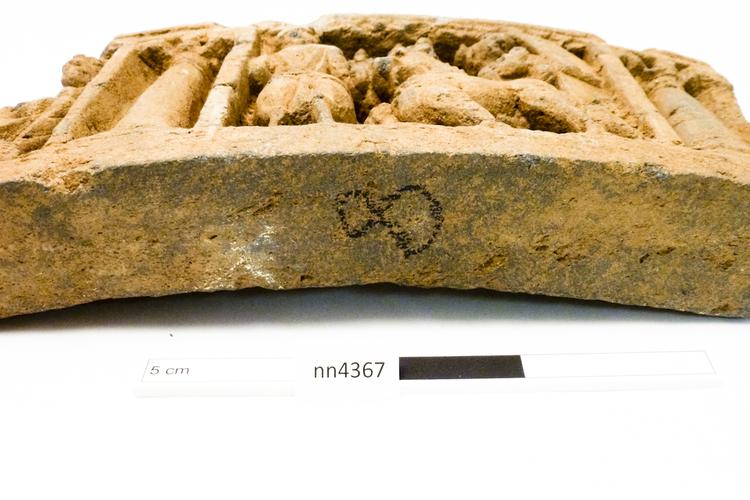
A convex curving grey schist panel carved with a scene from the life of the Buddha in Gandharan style, depicting the return to Kapilavastu of the baby Siddhartha and his mother Queen Maya, after his birth in the Lumbini Garden.
A convex curving grey schist panel carved with a scene from the life of the Buddha in Gandharan style, set between a pair of framed pillars with corinthian capitals. To the extreme left is a seated female in a context now lost. The main scene depicts the return to Kapilavastu of the baby Siddhartha and his mother Queen Maya, after his birth in the Lumbini Garden. Lumbini is located in southern Nepal. Kapilavastu was located either at the Nepalese ancient city site of Tilaura Kot near Taulihawa in the Nepalese Terai, or, if the Indian view is taken, it was at Piprahwa, a village in Siddharthnagar District of northern Uttar Pradesh. The baby in this panel is held in his mother's arms in a two-wheeled cart with a protective cover, drawn by a pair of lions, symbols of the Buddha and universal in the depiction of this part of the life story. The attendant horse and rider are shown here from the back, a convention it seems in the depiction of this event. This curving fragment of sculpture was clearly used as part of the votive adornment of the base of a round building, probably a stupa base. There is no find spot or archaeological context known for this piece, and no apparent way of tracing this information beyond the fact that it is inscribed in black crayon with the number '8'. Other pieces in this collection are similarly inscribed in black with other numbers, forming a kind of sequence and so an indication of a relationship with each other (both in provenance and acquisition terms). Gandharan style, circa 1st or 2nd centuries.



